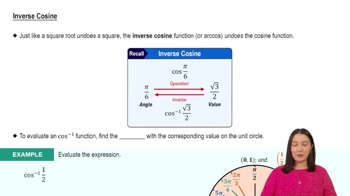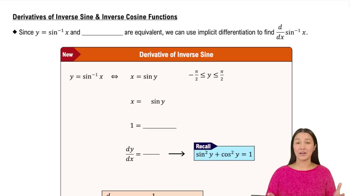Tangent lines Find an equation of the line tangent to the graph of f at the given point.
f(x) = sin−1(x/4); (2,π/6)
 Verified step by step guidance
Verified step by step guidance Verified video answer for a similar problem:
Verified video answer for a similar problem:



 7:26m
7:26mMaster Derivatives of Inverse Sine & Inverse Cosine with a bite sized video explanation from Patrick
Start learning